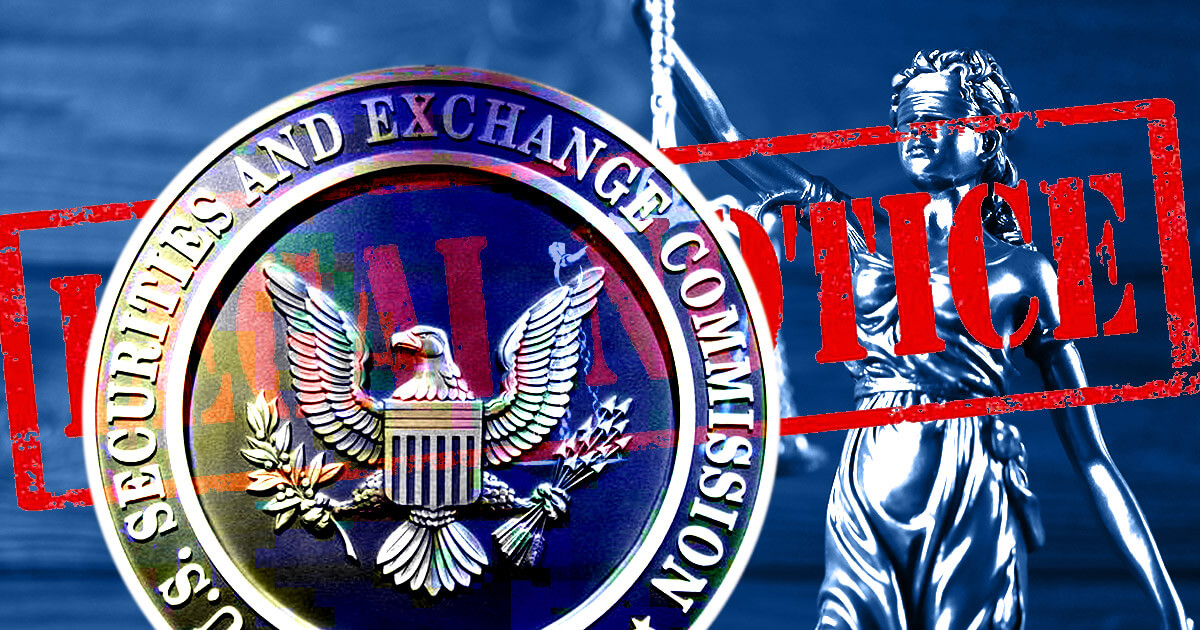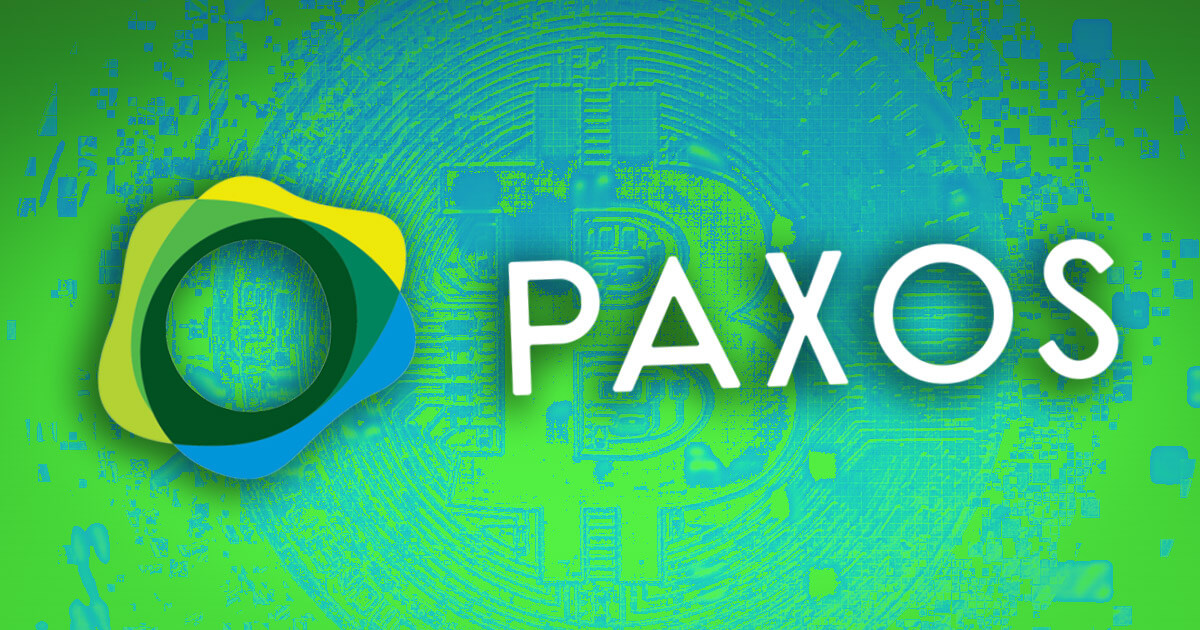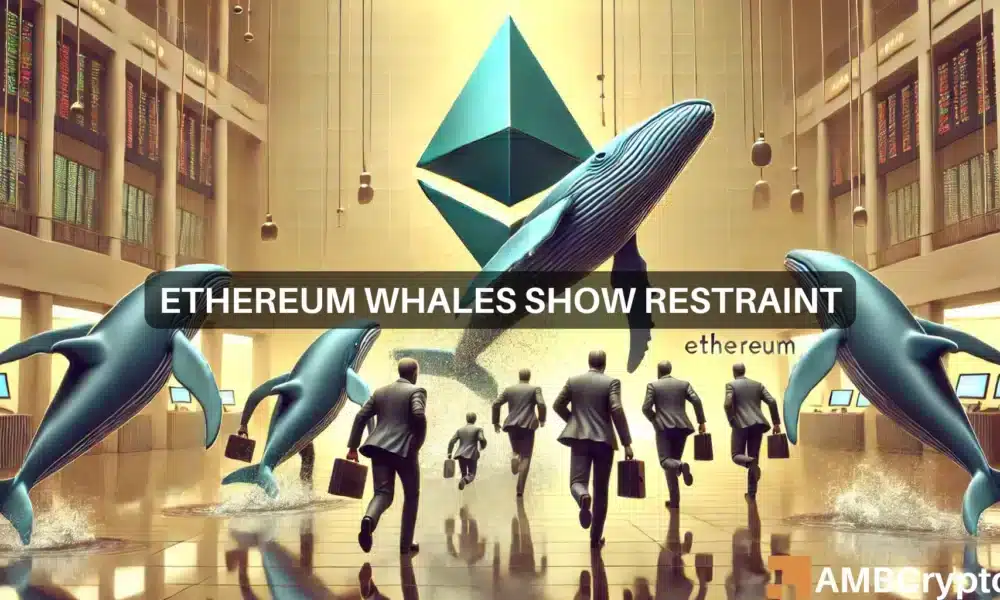GENERAL
The European Parliament has voted to approve the Regulation on Markets in Crypto-Assets (“MiCA”), which is expected to establish the first pan-European harmonized and comprehensive regulatory framework for crypto-assets and related services and activities. MiCA introduces uniform requirements for the issuance, offering and market placement of different types of crypto-assets, as well as creates one of the most encompassing regulatory regimes globally for the operation of crypto-asset service providers and for the performance of crypto-asset related activities. MiCA will apply not only to entities established in the EU, but also to entities conducting the covered activities in the EU, regardless of their place of origin. Failure to comply with MiCA can result, among others, in substantial fines (which in certain cases may reach 12.5% of the total annual turnover of the entity or more), periodic penalty payments, withdrawal or suspension of the authorization or offer and removal or ban of natural person from managerial positions. To assist with understanding and navigating between the novel requirements under MiCA, we are pleased to share Herzog’s MiCA Guide, providing explanation about its scope, key practical takeaways and insights.
2
EU Crypto Regulatory Framework (MiCA Regulation)
Herzog’s Guide
SCOPE OF MiCA
MiCA applies to natural and legal persons and other undertakings which are involved in the issuance, offering to the public and admission to trading of crypto-assets, and in the provision of various services related to crypto-assets in the EU.
THE KEY CATEGORIES OF REQUIREMENTS LAID DOWN BY MICA ARE THE FOLLOWING: Requirements related to transparency and disclosure as part of the issuance, offering to the public and the admission to trading of crypto-assets on trading platforms; Authorization and supervision of crypto-asset service providers and issuers of asset-referenced tokens or of electronic money tokens; Requirements related to the operation, organization and governance crypto-asset service providers, issuers asset-referenced tokens or of electronic money tokens; Requirements related to the crypto-asset holders protection as part of the issuance, offering to the public and admission to trading thereof; and crypto-asset service providers’ client protection; Requirements related to the prevention of insider dealing, unlawful disclosure of inside information and market manipulation.
In addition, under MiCA, further technical standards and guidance covering and specifying requirements on different subject matters will be issued by the applicable authorities.
3
EU Crypto Regulatory Framework (MiCA Regulation)
Herzog’s Guide
REGULATED TYPES OF CRYPTO-ASSETS – GENERAL OVERVIEW
MiCA defines ‘crypto asset’ as “a digital representation of a value or a right which may be transferred and stored electronically, using distributed ledger technology or similar technology”. It further distinguishes between three main categories of ‘crypto-assets’, subjecting each of them to a distinct regulatory regime. The first two generally referring to different types of tokens commonly referred to as `stablecoins’, (including algorithmic):
123
ASSET-REFERENCED TOKENS
crypto-assets, which are not e-money tokens, and which are intended to maintain a stable value by reference to any value or right or combination of the two, including any number of official currencies.
ELECTRONIC MONEY TOKENS OR E-MONEY TOKENS
crypto-assets which are intended to stabilize their value by reference to a single official currency.
ALL OTHER CRYPTO ASSETS
this category includes crypto-assets, which do not fall under the definition of assetreferenced tokens or e-money tokens, and covers a wide array of crypto-assets, including utility tokens.
Crypto-assets which fall under existing EU financial services regulations, such as security tokens and deposits, are not subject to the regulation and continue to be regulated under the respective regimes. Additional exemptions are detailed here
4
EU Crypto Regulatory Framework (MiCA Regulation)
Herzog’s Guide
ASSET-REFERENCED TOKENS (“ART”)
Offering of ARTs to the public in the EU or seeking admission of ARTs to trading on a trading platform for crypto-assets may only be done by a person established in the EU, which is authorized to do so by a competent authority in their state, or by a properly authorized credit institution which is subject to certain requirements without a need to obtain additional specific authorization. Exemptions
Some requirements would generally not apply in the following cases: The outstanding value of all ARTs never exceeds EUR 5,000,000 over a period of 12 months, and the issuer has no links to
network of issuers which are covered by such exemption; Offers which are addressed solely to qualified investors and under which only such qualified investors can hold such ARTs.
MiCA establishes stringent regulatory requirements for offering and admission to trading on trading platforms of ARTs (especially in comparison to those applicable to the offering of other “regular tokens” such as utility tokens, as detailed below), and includes among others: 1. A requirement for approval of a white paper by a competent authority; 2. Own funds requirement; 3. Approval regarding qualifying shareholders; 4. Requirement to present a wide array of information to the competent authority, including business model,
programme of operations, detailed description of governance arrangements, and legal opinion that the crypto-asset does not qualify as an ART or as a crypto-asset which constitutes one of the specified instruments regulated under other financial regulations. 5. Broader information disclosure and whitepaper content requirements; 6. Capital requirements proportionate to the issuance size of the ARTs; 7. Provision of token holder redemption right; 8. Requirement to have a registered office in an EU Member State; 9. Certain reporting requirements as well as a requirement to establish various policies, plans and procedures.
Credit institutions will be exempt from some of the above-mentioned requirements.
If the number of transactions of an ART per day associated to uses as means of exchange is higher than 1 million and their value is higher than EUR 200,000,000, within a single currency area, issuers will be required to stop issuing such ARTs and present to the competent authority a plan for reducing the level of activity.
The offering of interest for holding ARTs (yield generation) is banned under MiCA regime.
5
EU Crypto Regulatory Framework (MiCA Regulation)
Herzog’s Guide
ELECTRONIC MONEY TOKENS (“EMT”)
Offering of EMTs to the public in the EU or seeking admission of EMTs to trading on a trading platform for crypto-assets may only be done by properly authorized credit institutions which comply with additional requirements set in MiCA. MiCA applies the provisions of the Electronic Money Directive1 to the issuance and offering of EMTs, for the purpose of which EMTs shall be deemed as ‘electronic money’.
In addition to the requirements applicable to the issuance of other electronic money, the following requirements apply to an EMT issuer:
1. Drafting a white paper, its notification to the competent authority and its publishment;
2. Notifying the competent authority prior to the intended date of EMT issuance;
3. Additional various organizational, operational and business conduct requirements which are similar in nature to the ones applicable with regard to the offerors of ARTs (see above);
4. The issuance of EMTs is required to be conducted at par value and on the receipt of funds and provide its holders with the right for redemption of EMTs at par value;
5. Additional provisions concerning investment of funds received in exchange for EMTs would also apply.
The offering of interest for holding EMTs (yield generation) is banned under MiCA regime.
Significant EMTs and ARTs
In addition, MiCA introduces two sub-categories of ‘significant e-money tokens’ and ‘significant asset-referenced tokens’, which would be subject to more stringent regulatory requirements (e.g., higher capital, interoperability and liquidity management policy establishment requirements) and supervision than their not ‘significant’ counterparts (namely, supervision by the European Banking Authority [“EBA”] and local competent authority simultaneously). EMTs or ARTs may be considered as ‘significant’ if they meet certain criteria, such as: High number of token holders; High value, market capitalization or size of the reserve assets of the issuer; High number and value of transaction; The issuer’s identity (e.g. provider of core platforms services designated as gatekeeper under the Digital Markets Act; issuer
of additional asset-referenced or e-money token; provider of crypto-asset service) and significance of its activities; or Connectivity with the financial system.
1 Directive 2009/110/EC.
6
EU Crypto Regulatory Framework (MiCA Regulation)
Herzog’s Guide
CRYPTO-ASSETS, OTHER THAN EMTS & ARTS (“REGULAR TOKENS”)
Under MiCA, the offering of Regular Tokens, which are not EMTs or ARTs, to the public in the EU or their admission to trading on a trading platform for crypto-assets is subject to a wide array of specific requirements, including: 1. The offering must be made by a legal person; 2. Drafting a white paper in accordance with content and form requirements set in MiCA; 3. Notification and publishment of a white paper; 4. Where applicable, drafting and publishing marketing communications; 5. Obligations to act honestly, fairly, professionally, act to the best interest of the crypto-asset holders, without conflict of interest, and maintain all systems and security access protocols to appropriate EU standards.
Exemptions The obligations concerning the drafting, notification and the publishing of the white paper will generally not apply to the following offers: Offers to less than 150 persons per EU member state; The total consideration of an offer over a period of 12 months does not exceed EUR 1,000,000; Offers which are addressed solely to qualified investors and under which only such qualified investors can hold such Regular Tokens.
MiCA imposes on offerors of Regular Tokens an obligation to provide information on the results of the offer of such crypto-assets and safeguarding of funds received during such offers.
7
EU Crypto Regulatory Framework (MiCA Regulation)
Herzog’s Guide
MiCA also introduces a right of withdrawal for retail holders, under which retail holders who bought Regular Tokens directly from the offeror or from a crypto-asset service provider which placed such Regular Tokens on behalf of the offeror would be able to withdraw such purchase without cost.
Exemptions The obligations related to the offers to the public will not apply in the following circumstances: Airdrops’ and free offerings – However, if any monetary or non-monetary benefits, commissions or third party fees are received by the offeror from the potential holders in exchange for such Regular Tokens, or if a provision of personal data is required in exchange for these Regular Tokens – such offering will not be considered as ‘free’ and therefore will not be exempt from requirements under MiCA. Validation or DLT maintenance rewards – Automatic creation of Regular Tokens as a reward for the maintenance of the distributed ledger technology (including blockchain) or the validation of transactions; Utility token ready for use – Utility token of a good or service which exists or is in operation at the time of offering; Limited network exemption – Regular Token holder only has the right to use the crypto-asset in exchange for goods and services in a limited network of merchants with contractual arrangements with the offeror. These exemptions will not apply if the offeror or another person has communicated its intention to seek admission to trading in any communication. Generally, an authorization in relation to the custody, administration and transfer of the crypto-assets covered by the abovementioned exempt situations would not be required, unless there exists at least one other offer which would not fall under such exemptions, or the crypto-asset is admitted to trading platform, or the offeror or another person has communicated its intention to seek admission to trading in any communication.
8
EU Crypto Regulatory Framework (MiCA Regulation)
Herzog’s Guide
REGULATED CRYPTO-ASSET SERVICE PROVIDERS (“CASP”)
MiCA sets new mandatory authorization as well as additional regulatory requirements for the covered ‘crypto asset services providers’ or `CASPs’.
WHO IS A CASP?
Legal person or other undertaking whose occupation or business is the provision of one or more of the following services to third parties, on a professional basis, and are allowed to do so under MiCA:
Custody and administration of crypto-assets; Operation of a trading platform for crypto-assets; Exchange of crypto-assets for funds; Exchange of crypto-assets for other crypto-assets; Execution of orders for crypto-assets on behalf of third parties; Placing of crypto-assets; Transfer services for crypto-assets on behalf of third parties; Reception and transmission of orders for crypto-assets on behalf of third parties; Providing advice on crypto-assets; Providing portfolio management on crypto-assets.
KEY ONGOING REGULATORY REQUIREMENTS APPLICABLE TO CASPS
Obtaining and maintaining proper CASP authorization. In some cases, certain financial entities authorized under other financial regulations (e.g., investment firms) may provide certain crypto-asset services without the need to obtain additional authorization under MiCA.
Having a registered office in an EU Member State in which at least part of the CASP’s crypto-asset activities is carried out, as well as have an effective management in the EU and at least one director being a resident of the EU.
Acting honestly, fairly and professionally in the best interest of clients;
Establishing and maintaining up-to-date proper and effective policy procedures in place for identifying, preventing, managing and disclosing conflicts of interests, including prominently disclosing conflicts of interest on the CASP’s website;
9
EU Crypto Regulatory Framework (MiCA Regulation)
Herzog’s Guide
Provide risk disclosures associated with transactions in crypto-assets; Make pricing, costs and fee policies publicly available in a prominent fashion on the website; Specific ESG requirements; Prudential requirements, including specific capital requirements and insurance policy; Governance requirements, including fit and proper management, employing personnel with appropriate skills, knowledge and expertise, establishment and periodical review of adequate policies and procedures sufficient to ensure compliance with obligations under MiCA; Establishment of business continuity policy (including disaster recovery plan), systems and procedures to safeguard the security, integrity and confidentiality of information, and compliance with various requirements under the Digital Operational Resilience Act (DORA Regulation) more details about which you may find in our Herzog DORA Guide; Keeping records of all crypto-asset services, activities, orders and transactions for a period of five years, or up to seven if required by the competent authority, and allowing clients to receive such records related thereto; Provision of information to competent authorities; Arrangements for safekeeping of clients’ crypto-assets and funds, including in the event of the CASP’s insolvency, and for the purpose of preventing the use of a client’s crypto-assets for CASP’s own account; Establishing and maintaining proper complaint handling procedure, informing clients of a possibility to file a complaint, investigate all complaints in a timely and fair manner and inform the clients with an outcome of such investigations within a reasonable timeframe; Requirements in case of outsourcing; Establishing an appropriate plan to support an orderly wind-down, as well as other applicable policies and procedures. CASPs will also be considered as obliged entity under the AML/CTF laws and be subject to various AML/ CTF-related requirements. Service-Specific Requirements – In addition, CASP could also be subject to service-specific requirements, depending on the provided services, as follows:
10
EU Crypto Regulatory Framework (MiCA Regulation)
Herzog’s Guide
Type of Service
Custody and administration of crypto-assets on behalf of parties
Key Service-specific Requirements
1. Entering into agreement with CASP’s clients which will specify their duties and responsibilities, covering matters specified within MiCA;
2. Keeping register of positions which were opened in the name of each client in correspondence with each client’s rights to the crypto-assets, and maintaining proper internal procedures in accordance with MiCA;
3. Establishing and maintaining a custody policy with internal rules and procedures aimed at ensuring the safekeeping or the control of such crypto-assets, or the means of access to the crypto assets (e.g., cryptographic keys), and making a summary of such policy available to clients on request;
4. Where applicable, facilitating the rights attached to the crypto-assets.
5. Providing clients with statements of their crypto-asset position, at their request and at least once in three months;
6. Establishing and maintaining necessary procedures for returning crypto-assets or the means of access as soon as possible to the relevant clients;
7. Segregation of clients’ holdings of crypto-assets from the CASP’s holdings, and ensuring that the means of access to crypto-assets are clearly identified as such, including holding crypto-assets on separate addresses and operational segregation;
8. In case of outsourcing custody and administration of crypto-asset on behalf of third parties only use of providers authorized under MiCA is permitted, subject to informing the CASP’s users;
9. Insulation of the crypto-assets in custody from the CASP’s estate, ensuring that creditors of the CASP have no recourse on the crypto-assets held in custody, including in case of CASP’s insolvency;
Operation of a trading platform for crypto-assets
1. Establishing, maintaining and implementing clear and transparent operating rules for the trading platform, which would cover at minimum the matters specified in MiCA;
2. Prior to admitting a crypto-asset to trading, ensuring that such crypto-asset is in compliance with the abovementioned operating rules, and assessing the suitability of such crypto-asset;
3. Preventing admission to trading of crypto-assets with inbuild anonymization function where the holders of such crypto-assets or their transaction history cannot be identified by CASPs;
4. Avoiding dealing on own account on the trading platform they operate;
5. Avoiding matched principal trading, unless the client has provided the consent to such process;
6. Having in place effective systems, procedures and arrangements in order to ensure that the trading systems are compliant with the requirements specified within MiCA;
7. Inform competent authority when the CASP identifies cases of market abuse or attempted market abuse;
8. Making public any bid and ask prices and the depth of trading interests at the prices which are advertised through the systems of the trading platform, as required under MiCA.
9. Making public the transactions prices, volume and times, as required under MiCA;
10. Requirements concerning timeframes for the initiation of settlement;
11. Ensuring that fee structures are transparent, fair and non-discriminatory, and do not create incentives to place, modify or cancel orders or execute transactions in such fashion that contributes to disorderly trading conditions or market abuse;
12. Specific record keeping requirements (including maintaining resources and back-up facilities) and requirements related to the provision of access to such records to the competent authority;
11
EU Crypto Regulatory Framework (MiCA Regulation)
Herzog’s Guide
Type of Service
Key Service-specific Requirements
Exchange of cryptoassets against funds or exchange of crypto-assets against other crypto-assets
1. Establishing non-discriminatory commercial policy that indicates, particularly, the type of accepted clients and the conditions that shall be met by them;
2. Publishing a firm price of the crypto-assets or method for determining the price thereof, and any applicable limit to the exchanged amount;
3. Executing clients’ orders at the displayed prices and informing clients about the conditions for the order to be consider as final;
4. Publishing certain details of the transactions concluded by the CASP.
Execution of orders for crypto-assets on behalf of clients
1. Taking all necessary steps to obtain the best possible result for their clients while executing orders, unless following specific instructions provided by the clients;
2. Establishing and implementing effective execution arrangements, including order execution policy, and providing appropriate and clear information to their clients regarding such policy and significant change thereof, as well as obtaining prior consent from the clients with regard to such policy;
3. Being able to demonstrate to the clients and to the competent authority that the orders have been executed in accordance with the execution policy;
4. Where applicable, obtaining prior express client consent before executing orders outside a trading platform;
5. Monitoring the effectiveness of the order execution arrangements and execution policy.
Placing of cryptoassets
1. Communicating certain information to and obtaining necessary consents from the offeror, the person seeking admission to trading, or third party acting on their behalf prior to the conclusion of an agreement with them;
2. Having in place adequate procedures in place in order to prevent, monitor, manage and potentially disclose conflicts of interest related to the following situations: (a) CASPS placing the crypto-assets with their clients; (b) overestimated or underestimated price for placing crypto-assets; (c) the offeror granted or paid to the CASP incentives, including nonmonetary ones.
Providing transfer service for cryptoassets on behalf of third parties
1. Entering intro agreement with clients which could specify their duties and responsibilities, covering at least matters specified in MiCA.
2. Requirements regarding additional procedures and policies may further be introduced by the relevant authorities.
Reception and transmission of orders on behalf of third parties
1. Establishing and implementing order executions procedures and arrangements;
2. Avoiding from receiving remuneration, discount or non-monetary benefit for routing clients’ orders to a particular trading platform or CASP.
3. Avoiding misusing information relating to pending clients’ orders and taking all reasonable steps to preventing such misuse by any employee.
12
EU Crypto Regulatory Framework (MiCA Regulation)
Herzog’s Guide
Type of Service
Advice on crypto-assets and portfolio management of crypto-assets
Key Service-specific Requirements
Requirements applicable to either CASPs authorized to provide advice on crypto-assets or services of portfolio management of crypto-assets:
Conducting periodic suitability assessment of crypto-assets for the clients or potential clients (including obtaining required information in order to properly conduct such assessment);
Establishing, maintaining and implementing policies and procedures enabling to collect and assess all necessary and reliable information in order to conduct assessments for each client;
Providing certain information, warnings and disclosures to clients and potential clients, as applicable;
Avoiding recommending or beginning the provision of portfolio management service in relation to crypto-assets the CASP finds unsuitable for the client, or in relation to which the CASP has not received sufficient information from the client in order conduct the assessment of a crypto-asset;
Requirements specific to CASPs authorized to provide advice on crypto-assets:
Where applicable, conducting assessment of sufficient range of diverse cryptoassets in order to ensure client’s investment objectives;
Ensuring that natural persons providing advice or information regarding cryptoassets or crypto-asset service have the necessary knowledge and competence.
Where the advice is provided on an independent basis avoiding accepting and retaining fees, commissions or other monetary or non-monetary benefits paid or provided by third party or someone on third party’s behalf with regard to the provision of the service, subject to certain exemptions. Where the advice is provided on a nonindependent basis, CASP may receive inducements under certain conditions.
Requirements specific to CASPs authorized to provide services of portfolio management of crypto-assets:
Providing to the clients periodic statements of the portfolio management activities conducted on behalf of the client.
Avoiding accepting and retaining fees, commissions or other monetary or nonmonetary benefits paid or provided by an issuer, offeror, person seeking admission to trading, or any third party or someone on third party’s behalf with regard to the provision of the service.
13
EU Crypto Regulatory Framework (MiCA Regulation)
Herzog’s Guide
ADDITIONAL ISSUES
EXEMPTIONS FROM SCOPE
Despite the comprehensiveness of MiCA, some types of digital assets as well as services and activities were purposefully left beyond the scope of this regulation.
Exempted Services, Activities and Persons MiCA does not apply to the following services, activities and persons: In-group activity – MiCA does not apply to the providers or crypto-asset services solely for their subsidiaries,
their parent companies or for subsidiaries of their parent companies; Lending and borrowing of crypto-assets, including electronic money tokens; Decentralized Finance (DeFi) and Decentralized Autonomous Organizations (DAOs) – the provision of
crypto-asset services in a fully decentralized manner and without intermediaries falls outside of the scope of MiCA. However, if only part of crypto-asset services or activities are performed in a decentralized way, the provisions of MiCA would apply to the legal persons and other undertakings which perform, provide or control them. Hardware or software providers of non-custodial wallets; Liquidator or an administrator operating as part of an insolvency procedure, subject to exemption specified within MiCA; Central Banks and Public Authorities – European Central Bank, national central banks of the EU member states operating in capacity as monetary authority or other public authority of the EU member state; Other Exempted Entities – the European Investment Bank and its subsidiaries, the European Financial Stability Facility or the European Stability Mechanism, or public international organizations.
14
EU Crypto Regulatory Framework (MiCA Regulation)
Herzog’s Guide
Exempted Digital Assets
MiCA does not apply to the following digital assets:
Digital assets which do not meet the definition of “crypto asset” under MiCA.
Crypto-assets which fall under existing EU financial services regulations, regardless of the technology used for the issuance or transfer thereof. Such crypto-assets include crypto-assets which qualify as the following under the applicable EU legislation: Financial instruments (e.g., security tokens); Deposits (including structured deposits); Funds (with an exception of e-money tokens); Securitisation positions in the context of a securitisation; Certain insurance products, reinsurance and retrocession contracts, social security schemes, as well as certain pension products and schemes.
Unique and Non Fungible Crypto-Assets (e.g., certain NFTs) – unique and not fungible crypto-assets are generally exempt from the applicability of MiCA. This category includes digital art and collectible non-fungible tokens (NFTs), the value of which is related to the unique characteristics of such NFT and to the utility such NFT provides to its holder. Crypto-assets which represent services or physical assets which are unique and not fungible (e.g. real estate or product guarantees) remain beyond the scope of MiCA as well.
However, MiCA acknowledges that uniqueness and non-fungibility of a crypto-asset may not rely solely on attribution of a unique identifier (UID) to a crypto-asset, and therefore not all NFTs would necessarily fall outside of the scope of MiCA. The following categories of NFTs are at particular risk to be considered as not unique or non-fungible, and thus to be subject to the provisions of MiCA:
Fractionalized NFTs (F-NFTs) – the fractional parts of a unique and non-fungible crypto-assets. NFTs issued in large series or collection – such category may include, among others, certain NFTs issued
under a popular ERC-1155 standard, as long as assets or rights represented by such NFTs are fungible or not unique. NFTs which are substantially not-fungible or not unique – MiCA guides the competent authorities to implement ‘substance over form’ approach and conduct such evaluation based on the features of the crypto-asset. However, it should be noted that even unique and not-fungible tokens would not necessarily fall outside of the definition of ‘financial instruments’ and applicability of other financial regulations, and such evaluation is to be made separately.
Non-transferable digital assets – this category generally includes, among others, the `Soulbound NFTs’.
Digital assets issued by central banks acting in their monetary authority capacity.
15
EU Crypto Regulatory Framework (MiCA Regulation)
Herzog’s Guide
PASSPORTING
MiCA introduces a ‘passporting’ mechanism, under which obtaining the required authorization in one EU Member State would allow the holder of such authorization to provide services throughout the entire EU without a need to obtain similar authorizations in other Member States. Furthermore, the `passporting’ mechanism allows offering crypto-assets, which do not fall under the definition of asset-referenced tokens or e-money tokens, or having them admitted to trading in the EU after the publication of the relevant white paper without being subject to additional information requirements.
REVERSE SOLICITATION
MiCA also introduces the concept of ‘reverse solicitation’ to the crypto-asset services domain, under which firms established outside of the EU are permitted to provide crypto-asset services to EU clients at the own initiative of such clients without being subject to authorization requirements under MiCA.
ENVIRONMENTAL, SOCIAL AND CORPORATE GOVERNANCE (ESG)
The issuers of crypto-assets are required to disclose and make publicly available information on adverse environmental and climate footprint of such crypto-assets and underlying technology thereof, and CASPs are required to provide disclosures in relation to each crypto-asset with regard to which they provide such services. In addition, the European Securities and Markets Authority (ESMA), in cooperation with EBA, will further develop regulatory technical standards which fill specify the content, methodologies and presentation of such information.
16
EU Crypto Regulatory Framework (MiCA Regulation)
Herzog’s Guide
WHAT’S NEXT FOR MiCA?
MiCA regulation was approved by the European Parliament on 20 April 2023 aand is expected to pass its final legislative approvals and to enter into force by July 2023. While certain provisions related to asset-referenced tokens and e-money tokens will apply from 12 months following the date of entry into force, the remaining provisions of MiCA will apply from 18 months following the date of entry into force. Competent authorities in the EU members states will get additional powers to fulfill their role under the new MiCA regime, in addition to powers provided to other applicable EU authorities.
TRANSITIONAL PROVISIONS AND GRANDFATHERING PERIOD MiCA introduces `grandfathering’ provisions for crypto-asset service providers which provided their services in compliance with applicable law prior to the entry into application of MiCA. Under these provisions, such crypto-asset service providers may be eligible to provide their service without obtaining authorization under the new MiCA regime for up to additional 18 months. Furthermore, MiCA permits members states, subject to certain limitations, to apply simplified procedures for authorization of crypto-asset services providers which were authorized to provide such services under national law at the date of application of MiCA. MiCA also introduces certain transitional provisions with regard to crypto-assets admitted to trading prior to its entry into application, as well as concerning exemption from authorization requirements for issuers of asset-referenced tokens which issued such tokens prior to its entry into application. MiCA would also exempt activities related to Regular Tokens which were issued or admitted to trading on a trading platform for crypto-asset prior to entry into application of the provisions of MiCA.
Businesses that are involved in issuance, offering, admission to trading, exchange or transfer of crypto-assets, or which provide other services related to crypto-assets in the EU, should stay tuned for further updates and already start preparing a path to compliance with the new regulatory framework before it goes into effect. Feel free to contact us if you have any questions regarding the new regulations and their potential effects on your company’s compliance efforts.
17
EU Crypto Regulatory Framework (MiCA Regulation)
Herzog’s Guide
HERZOG’S TECHNOLOGY & ECOMMERCE REGULATION DEPARTMENT
Herzog’s Technology & eCommerce Regulation Department is a recognized market leader in its field. The team is led by domain experts who possess a unique set of vital, interdisciplinary and global regulatory advisory skills, and are uniquely positioned to advise a range of clients, including leading multinational technology companies as well as start-ups and disruptive technologies vendors, on applicable regulatory and compliance considerations in numerous technological areas. We understand that the regulatory exposure and scope of required attention of almost any company operating in the digital and technological sphere are much wider than one specific jurisdiction or legal discipline. As our clients are often on the forefront of this ever-evolving landscape, we further understand the impact of industry trends and compliance demands on our clients’ businesses. Therefore, our team possesses in-depth knowledge of the increasing volume of regulations, enforcement actions, legislative and industry trends in a myriad of jurisdictions, digital platforms and leading self-regulatory guidelines. This enables our team to offer practical, holistic and comprehensive solutions for complex situations often presented by innovative technologies and disruptive business solutions, providing “hands-on” support to our clients on the strategic, corporate and operational aspects of their business, with the aim of mitigating our clients’ legal and business risks. Technological developments in recent years are reshaping the world of finance, payments, trading and investments. Our department has positioned itself at the forefront of this burgeoning industry by providing a holistic suite of end-to-end legal services, to assist clients in operating their businesses in accordance with all the applicable regulatory and business considerations. Our clients include international operators and creators in the crypto sector, financial technologies and payments providers, banks and finance intermediators.
This document does not constitute an exhaustive legal opinion or regulatory overview of all applicable regulatory requirements regarding the topics addressed by it, but rather, only outlines the key issues arising from the regulatory requirements. Since we are not licensed to practice law outside of Israel, this document is intended to provide only a general background regarding this matter. This document should not be regarded as setting out binding legal advice, but rather a general overview which is based on our understanding of the practical interpretation of the applicable laws, regulations and industry guidelines.
Credit: Source link















































